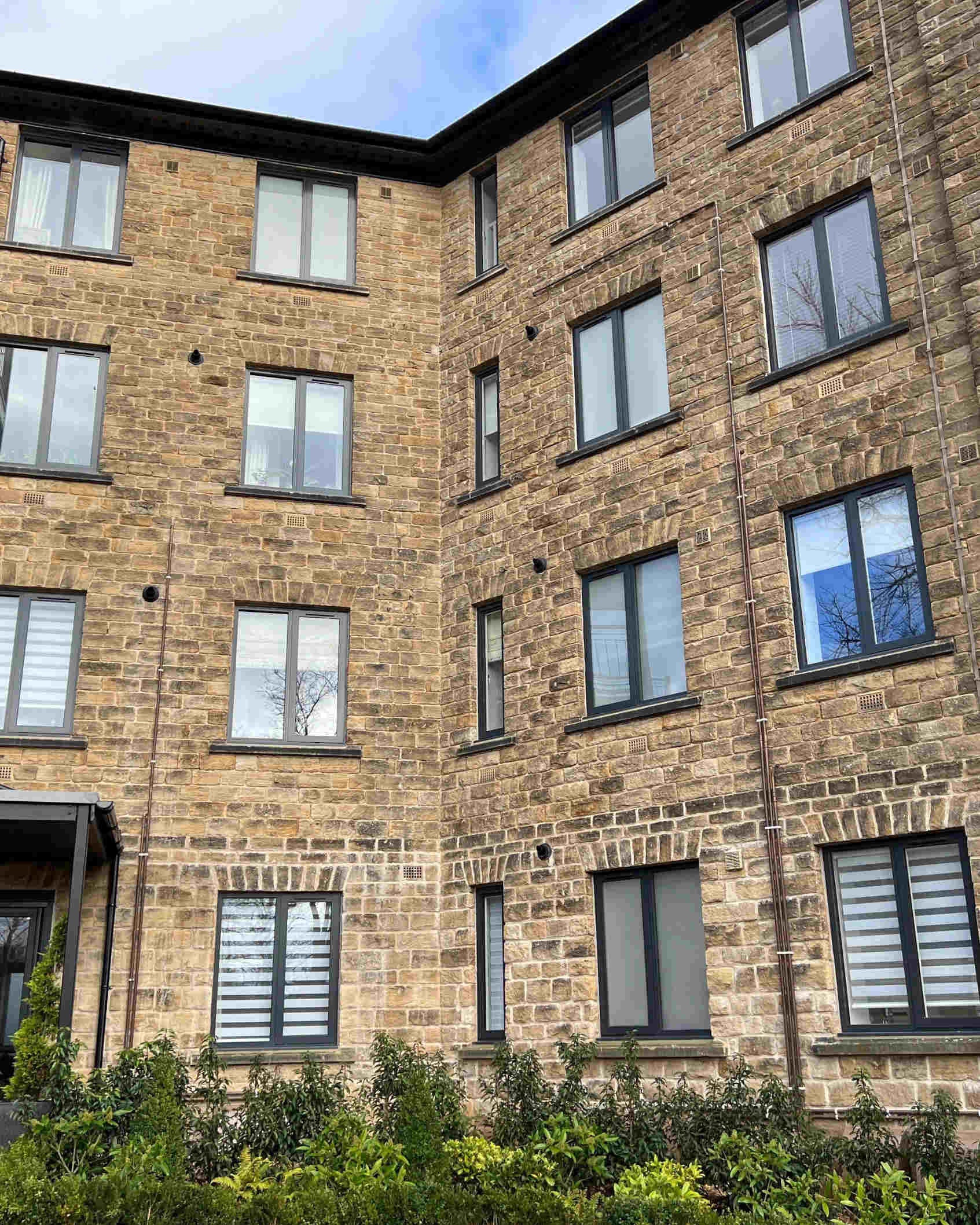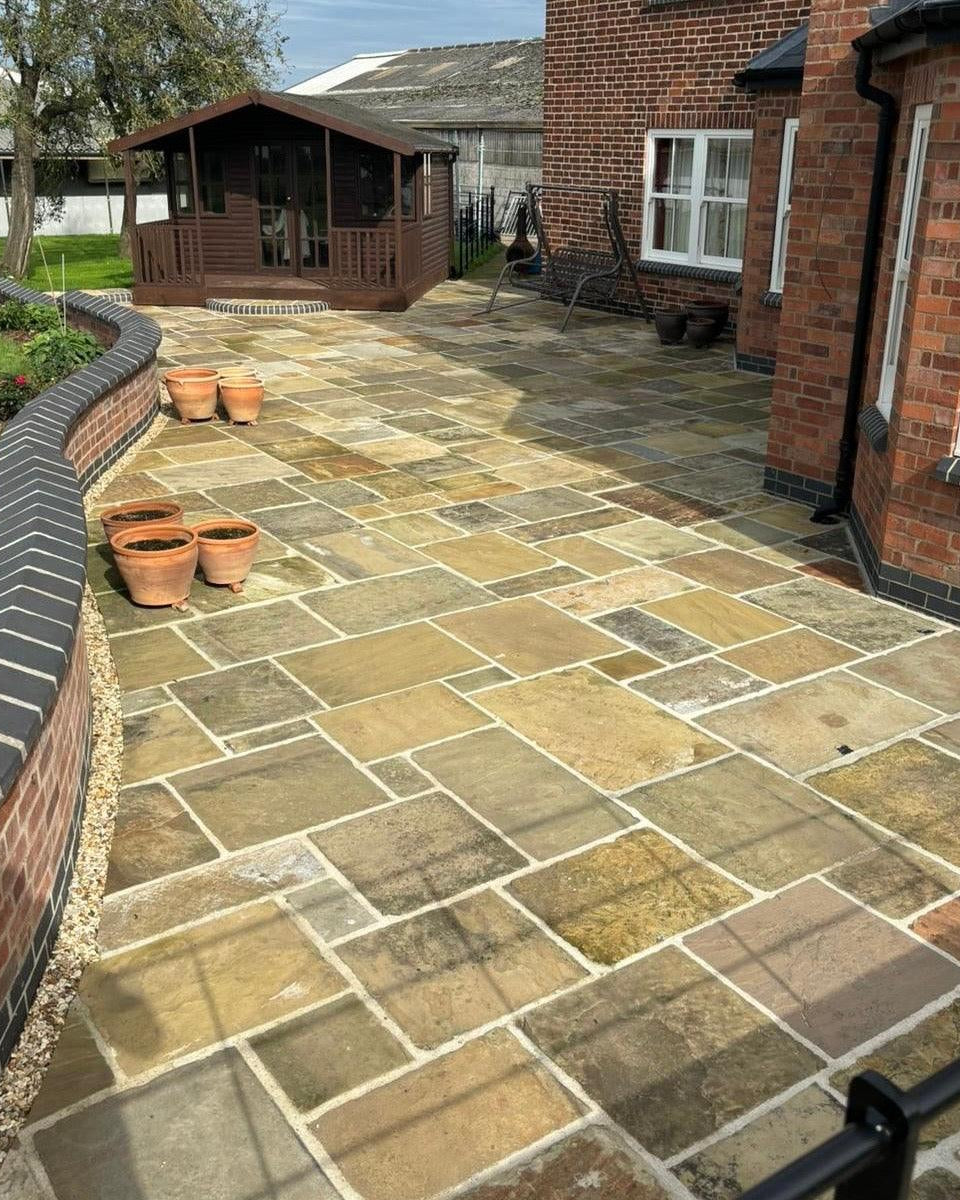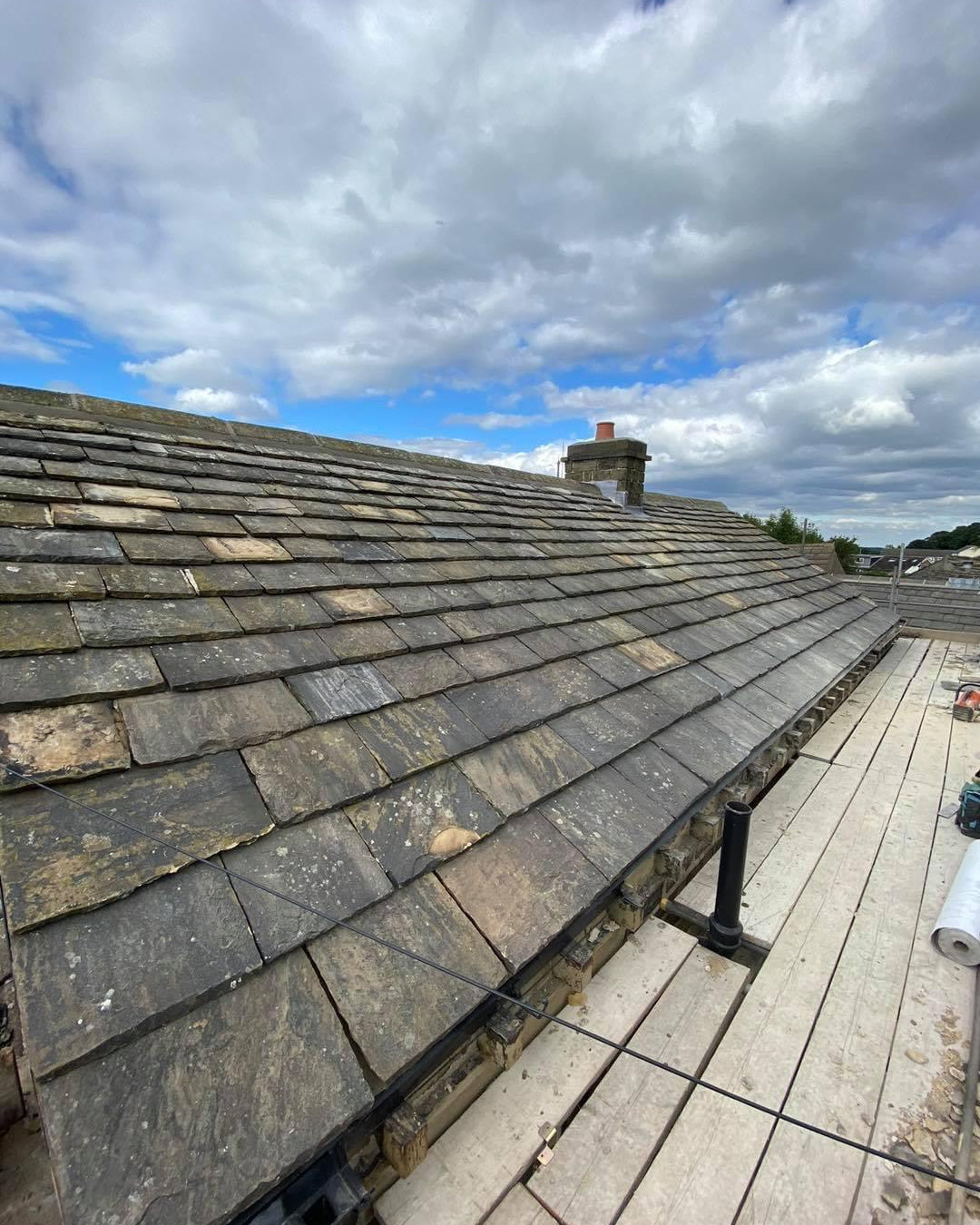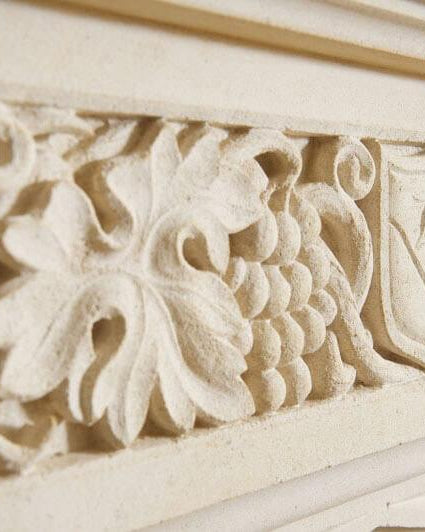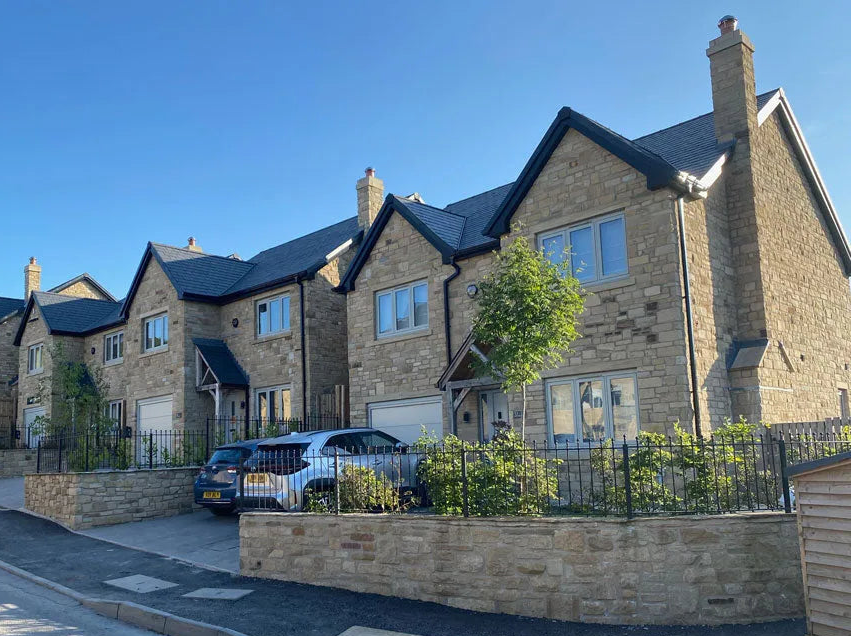Pitched Face Stone
Pitched face stone is known for its rough, textured surface, created by striking the stone with a hammer or chisel to break off edges and achieve a rugged, uneven appearance. This type of stone is often used for exterior walls and facades, providing a robust, natural look. Its unique texture adds character to buildings and is popular in both modern and traditional stonework.
Punched Face Stone
Punched face stone features a smoother surface than pitched face stone, with a slightly uneven texture. This effect is created by lightly striking the stone with a punch or chisel to create a subtle, pitted surface. Punched face stone is commonly used for masonry work and is especially popular for building walls and chimneys where a more refined but still rustic look is desired.
Delph Stone
Delph stone is a type of sandstone that is typically sourced from quarries in the UK, particularly from areas like Yorkshire and Lancashire. It is known for its durability and fine-grained texture, making it ideal for walling and cladding. Delph stone often has a subtle grey or buff tone and is highly valued for its ability to weather beautifully over time, lending buildings a rustic, aged appearance.
Random Stone
Random stone refers to irregularly shaped stones that are used in natural stone walling or paving. These stones vary in size and shape, allowing for a more organic and less uniform appearance. Random stone is perfect for dry stone walls or traditional garden walls, offering a natural and rustic aesthetic. Its varied forms help to create visual interest and enhance the character of a building or outdoor space.
Secondary Stone
Secondary stone refers to stones that are salvaged from construction projects or buildings that have been decommissioned. These stones may not be as uniform or high-grade as primary stones, but they can still be used effectively in construction. Secondary stone is often used for non-structural elements, such as garden walls, pathways, and landscaping features. It provides a cost-effective option for projects that require reclaimed materials.
Sparrow Stone
Sparrow stone is a type of reclaimed building stone that features small, irregularly shaped pieces with a distinct texture. This stone often has a weathered and worn appearance, adding a sense of age and charm to any construction project. Sparrow stone is commonly used in the restoration of historical buildings and is also ideal for creating rustic garden features or ornamental stonework.
Tumbled Stone
Tumbled stone is stone that has been treated to achieve a smooth, worn appearance. It is often used for paving and walling applications, where a more weathered or antique look is desired. Tumbled stone may come in a range of materials, including sandstone, limestone, and granite, and its softer edges and worn surface make it perfect for creating a more classic or vintage aesthetic in both interiors and exteriors.
Parallel Punched Stone
Parallel punched stone is a type of stone where the surface has been gently struck with a punch to create a series of parallel indentations, resulting in a uniform texture. This treatment is commonly used for stone facades, where a sleek yet slightly textured surface is needed. Parallel punched stone is particularly suitable for modern and contemporary projects, where subtle detailing is required.
Stugged Stone
Stugged stone has a rough, chiseled texture created by striking the surface with a stugging tool. This technique produces an uneven surface, with natural stone features that highlight the stone’s texture and natural variations. Stugged stone is often used in building facades, garden walls, and landscape features, giving buildings a timeless, traditional appearance.
Weathered Stone
Weathered stone has naturally aged over time, acquiring a unique patina that gives it a distinctive, softened appearance. The surface may show signs of wear, with smoother edges and a slightly faded colour compared to fresh-cut stone. Weathered stone is highly prized for its character and is often used in restoration projects, where maintaining the authenticity of a building is crucial. It’s also used for creating outdoor spaces, where the natural appearance of the stone blends well with its surroundings.
Benefits of Using Different Types of Reclaimed Building Stone
Using reclaimed building stone not only offers a sustainable building option but also enhances the aesthetic appeal of your project. The variety of textures, finishes, and ages in reclaimed stones allows for a unique and personalized finish to any building, whether you're constructing a new home, undertaking a barn conversion, or creating an attractive garden feature. At Britannia Stone, we offer a diverse selection of reclaimed stones, each with its distinct character, allowing you to choose the perfect stone for your next project.

